
METEORITICS & PLANETARY SCIENCE
Scope & Guideline
Illuminating the Mysteries of Planetary Processes.
Introduction
Aims and Scopes
- Meteorite Characterization and Classification:
The journal publishes extensive research on the mineralogical, petrological, and geochemical analysis of meteorites, including their classification, origin, and the implications of their properties for understanding planetary processes. - Planetary Processes and Impact Studies:
A core area of focus is the study of impact events, their geological consequences, and the thermal histories of planetary bodies, particularly how these factors shape the evolution of asteroids, moons, and planets. - Astrobiology and Organic Chemistry:
Research on the presence and implications of organic compounds in meteorites and extraterrestrial materials is highlighted, with studies investigating the potential for life and prebiotic chemistry in the solar system. - Cosmochemistry and Isotope Studies:
The journal emphasizes isotopic analyses and cosmochemical modeling to trace the origins and evolutionary histories of solar system materials, providing insights into the conditions of the early solar nebula and planetary formation. - Sample Return Missions and Remote Sensing:
Recent advancements in planetary exploration, particularly through sample return missions like Hayabusa2 and OSIRIS-REx, are a significant focus, including the analysis and interpretation of returned samples.
Trending and Emerging
- Asteroid Sample Return Studies:
Following missions such as Hayabusa2 and OSIRIS-REx, there is a notable increase in research related to the analysis of asteroid samples, emphasizing their significance for understanding the solar system's history and the processes that govern planetary evolution. - Space Weathering Effects:
Research into space weathering processes and their effects on meteorite surfaces, particularly regarding how these processes inform our understanding of asteroidal and planetary surface conditions, is increasingly prevalent. - Organic Chemistry and Prebiotic Processes:
The exploration of organic compounds within meteorites, particularly in relation to astrobiology and the origins of life, shows a marked increase, highlighting the importance of these studies in understanding the potential for life beyond Earth. - High-Resolution Imaging and Analysis Techniques:
Emerging methodologies such as 3D imaging, advanced spectroscopy, and micro-computed tomography are trending, allowing for more detailed analysis of meteorite samples and enhancing our understanding of their properties. - Isotope Geochemistry and Cosmochemical Modeling:
There is a growing trend in the use of isotopic analyses and cosmochemical models to decipher the origins of solar system materials, providing insights into the processes that formed planets and asteroids.
Declining or Waning
- Historical Meteorite Events:
Research that focuses on historical meteorite falls or events, while still relevant, has seen a decrease in publication frequency as the community increasingly concentrates on contemporary findings and new discoveries. - Traditional Petrology without Advanced Techniques:
Studies strictly adhering to classical petrology methods without integrating advanced analytical techniques (like spectroscopy or isotopic analysis) have become less common, as there is a growing emphasis on more sophisticated methodologies. - General Reviews and Meta-analyses:
The frequency of broad review papers or meta-analyses appears to be waning, with researchers favoring more specific, data-driven studies that contribute directly to ongoing debates or emerging questions in the field. - Mineralogical Studies of Lesser-Known Meteorites:
Research on lesser-known or rare meteorite types seems to have lessened, possibly due to a shift in focus towards more impactful or widely studied meteorite falls and their implications for planetary science.
Similar Journals
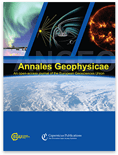
ANNALES GEOPHYSICAE
Fostering Collaboration Across Geophysical DisciplinesANNALES GEOPHYSICAE is a distinguished open access journal published by COPERNICUS GESELLSCHAFT MBH, renowned for its contributions to the field of geophysics and related disciplines. Since its inception in 1996 as an open access journal, ANNALES GEOPHYSICAE has provided a vital platform for researchers to disseminate their findings covering a wide array of topics within Astronomy and Astrophysics, Atmospheric Science, and Earth and Planetary Sciences. The journal enjoys a commendable reputation, evidenced by its impressive 2023 category quartiles, ranking Q1 in Earth and Planetary Sciences (miscellaneous) and Q2 in several other relevant categories, reflecting its significance in the global research community. Based in Germany and accessible to a diverse audience, ANNALES GEOPHYSICAE serves as an essential resource for academics, practitioners, and students alike, striving to foster advancements in our understanding of geophysical phenomena and encouraging collaboration across disciplines.

Geochemical Perspectives Letters
Fostering dialogue in the dynamic world of geochemistry.Geochemical Perspectives Letters, published by the European Association of Geochemistry, is a leading open-access journal that has been at the forefront of geochemical research since its inception in 2015. Based in France, this journal is dedicated to disseminating high-quality, original research and reviews across the fields of Environmental Chemistry, Geochemistry, and Petrology, and Geology. With an impressive Q1 ranking in multiple categories, and notable Scopus rankings placing it among the top-tier journals in Earth Sciences, Geochemical Perspectives Letters aims to foster scientific dialogue and collaboration among researchers and professionals. Its open-access model ensures widespread dissemination of knowledge, making it accessible to a diverse audience, including students and seasoned experts alike. As the journal continues to converge research insights from 2015 to 2024, it remains a pivotal resource for those striving to understand and address the complexities of our planet's geochemical processes.

Earth and Planetary Physics
Connecting Global Scholars in Earth and Planetary PhysicsEarth and Planetary Physics, published by SCIENCE PRESS, is a distinguished open-access journal that has been a vital resource for the scientific community since its inception in 2017. With both ISSN and E-ISSN 2096-3955, this journal contributes significantly to the fields of Astronomy and Astrophysics, Atmospheric Science, and Space and Planetary Science, consistently holding a Q2 quartile ranking across these categories as of 2023. Based in the United States, its editorial board consists of renowned experts dedicated to advancing the understanding of planetary phenomena and Earth processes. The journal prides itself on its rigorous peer-review process and broad readership, facilitating the dissemination of cutting-edge research and innovative methodologies. This commitment is reflected in its strong Scopus rankings, positioning it competitively within its scope—rank #33 in Astronomy and Astrophysics and rank #40 in Space and Planetary Science. As an open-access journal, Earth and Planetary Physics is committed to providing free and global access to high-quality research, thereby enhancing visibility and impact for its authors while catering to researchers, professionals, and students eager to explore the intricacies of our planet and beyond.
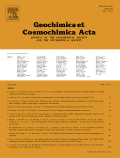
GEOCHIMICA ET COSMOCHIMICA ACTA
Driving Innovation in Earth and Planetary SciencesGEOCHIMICA ET COSMOCHIMICA ACTA is a premier journal dedicated to advancing the fields of geochemistry and petrology, published by Pergamon-Elsevier Science Ltd. With its ISSN 0016-7037 and E-ISSN 1872-9533, this esteemed journal has been at the forefront of scientific inquiry since its inception in 1950, with a strong commitment to disseminating high-quality research through 2024. Its reputation is underscored by an impressive impact factor and a ranking of #8 out of 154 in Earth and Planetary Sciences according to Scopus, placing it in the 95th percentile of its category. GEOCHIMICA ET COSMOCHIMICA ACTA serves as a critical resource for researchers, professionals, and students alike, offering insights into the complex interactions of geological and cosmological processes. While the journal is not open access, it remains a vital conduit for innovative research, fostering the scientific community’s understanding of earth materials and their significance.
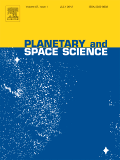
PLANETARY AND SPACE SCIENCE
Exploring the Cosmos: Unveiling the Mysteries of Planetary SciencePLANETARY AND SPACE SCIENCE is a leading journal dedicated to the interdisciplinary field of astral studies, encompassing both planetary science and the exploration of space. Published by PERGAMON-ELSEVIER SCIENCE LTD in the United Kingdom, this journal has been pivotal since its inception in 1959, continually contributing to advancements in research about planetary bodies, their atmospheres, and the broader cosmic landscape. With an impressive impact factor, PLANETARY AND SPACE SCIENCE ranks in the second quartile of Astronomy and Astrophysics and the third quartile in Space and Planetary Science as of 2023, showcasing its scholarly significance. The journal aims to provide a platform for the dissemination of cutting-edge research, emphasizing the critical role of space exploration and planetary studies in understanding our universe. Researchers, professionals, and students alike are encouraged to explore the wealth of knowledge presented in its pages, fostering a deeper comprehension of the phenomena that shapes both our solar system and beyond.

GEOMAGNETISM AND AERONOMY
Charting New Frontiers in Planetary ScienceGEOMAGNETISM AND AERONOMY, published by MAIK NAUKA/INTERPERIODICA/SPRINGER, is a prominent journal dedicated to advancing the fields of geophysics and planetary science. With ISSN 0016-7932 and E-ISSN 1555-645X, this journal serves as a critical platform for researchers to disseminate their findings on geomagnetic phenomena and aeronomical studies, fostering a deeper understanding of Earth's magnetic field dynamics and atmospheric interactions. Spanning publishing years from 1996 to 2024, it is categorized in the Q3 quartile for geophysics and Q4 for space and planetary science, reflecting its positioning within the academic landscape. Although not open access, readers and researchers can access valuable insights into geomagnetic and atmospheric research, contributing to ongoing discourse in these vital scientific domains. With a focus on innovative research, GEOMAGNETISM AND AERONOMY remains an essential resource for professionals and students aiming to deepen their expertise in Earth and planetary sciences.
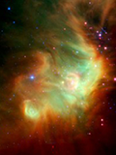
Annual Review of Earth and Planetary Sciences
Unlocking the Secrets of Our Planetary NeighborsAnnual Review of Earth and Planetary Sciences is a leading scholarly journal published by Annual Reviews, dedicated to advancing our understanding of the dynamic processes governing the Earth and its celestial companions. With ISSN 0084-6597 and E-ISSN 1545-4495, this esteemed journal, established in 1976, has consistently provided comprehensive reviews that synthesize cutting-edge research across various disciplines, including astronomy, astrobiology, geology, and planetary science. Notably, the journal has achieved a remarkable position in the academic landscape, ranking in the Q1 quartile across multiple categories, including Astronomy and Astrophysics and Earth and Planetary Sciences, with Scopus rankings placing it at the forefront of these fields. The journal's commitment to facilitating open access to critical scientific advances, though not fully open, allows for maximum reach within the research community. Researchers, professionals, and students alike can benefit from the high-impact articles designed to foster collaboration and innovation within the fields of earth and planetary science.
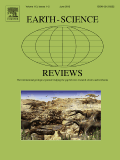
EARTH-SCIENCE REVIEWS
Fostering scientific dialogue through high-quality reviews.EARTH-SCIENCE REVIEWS, published by Elsevier, is a prestigious journal in the field of Earth and Planetary Sciences. With an impressive impact factor and ranked in the Q1 quartile for its category, this journal has established itself as a leading platform for the dissemination of high-quality research and reviews. Spanning topics within general Earth and planetary sciences, the journal provides a unique confluence of interdisciplinary studies, serving researchers, professionals, and students who seek to deepen their understanding and foster advancements in the field. Based in the Netherlands, the journal has been integral to the scholarly community since its inception in 1966, with an ongoing commitment to presenting cutting-edge reviews that propel scientific discussions forward. While it does not offer open access options, its rigorous review process and high-ranking status make it a valuable resource for anyone engaged in earth sciences.

Chinese Space Science and Technology
Connecting Global Minds in Aerospace DevelopmentChinese Space Science and Technology is a pivotal journal dedicated to advancing the field of space engineering and technology, published by the esteemed Chinese Academy of Space Technology. With an ISSN of 1000-758X, this publication serves as a significant platform for cutting-edge research from China and around the globe, spanning vital intersections of Aerospace Engineering, Electrical and Electronic Engineering, and Materials Science. As evidenced by its Q3 ranking in 2023 across these categories, the journal consistently showcases innovative studies that contribute to the development of space technology, thereby impacting both theoretical frameworks and practical applications in the industry. Researchers and professionals will find valuable insights within its pages, while students can enrich their educational journey through its wealth of knowledge. Though primarily published in print, the journal continues to foster collaboration and engagement among the academic community, offering a glimpse into the future of space exploration and technological advancements through its relevant and timely content.

Journal of Asian Earth Sciences-X
Connecting Researchers to Tackle Global Environmental ChallengesJournal of Asian Earth Sciences-X, a distinguished publication by ELSEVIER, is at the forefront of Earth and planetary sciences, particularly focusing on the dynamic fields of geology and earth-surface processes. As an Open Access journal since 2019, it provides unparalleled access to high-quality research, fostering global collaboration and dissemination of knowledge. With an impressive impact factor and ranking in the Q2 category for both Earth-Surface Processes and Geology, it serves as a crucial platform for researchers, professionals, and students alike to share their findings and insights. Situated in the United Kingdom, the journal thrives on contributions that enhance our understanding of Asian geosciences within a broader global context, aiming to tackle major challenges such as climate change and natural resource management. By bridging regional studies with global perspectives, the Journal of Asian Earth Sciences-X is not only a vital resource for academia but also supports sustainable development initiatives across the region.